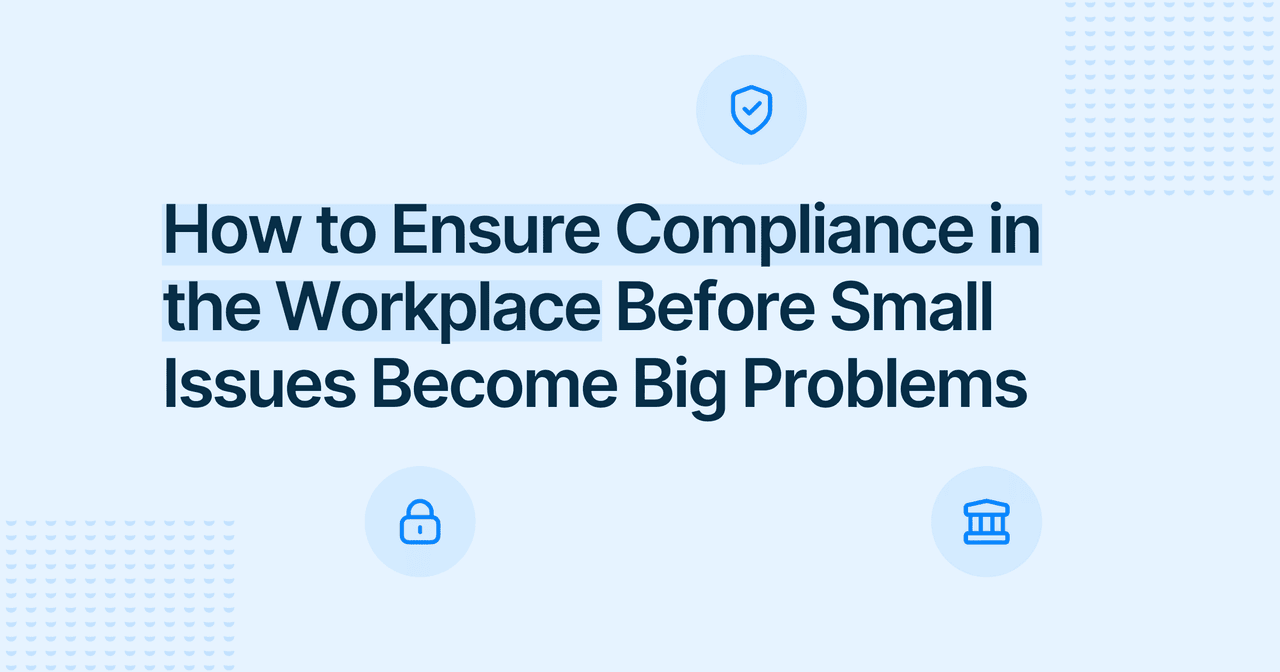



Discover the benefits of a transparent organization!
Try our free platform and strengthen the culture of openness in your team.
Legal & Compliance

Yeva Bartkiv
Copywriter
Published
2025-06-12
Reading time
5 min


Table of contents
Subscribe to our newsletter
In April 2024, a significant update to UK employment law came into effect, requiring all UK employers to take proactive steps to prevent workplace harassment, with a particular emphasis on sexual harassment.
These changes were introduced through the Worker Protection Act, amending the Equality Act 2010, and have wide-reaching implications for businesses of all sizes across England, Scotland, Wales, and Northern Ireland.

This article provides an in-depth overview of the new legal duty, explains what constitutes harassment under UK law, and outlines the practical steps employers must take to remain compliant and protect both their people and their reputation.
Under the revised Equality Act 2010, employers now have a preventative duty to take reasonable steps to prevent sexual harassment in the workplace. This represents a clear shift from reactive responses to a proactive model of protection.
Failure to comply with this legal obligation could result in a claim being brought before an employment tribunal, leading to financial penalties, reputational harm, and disruption to your workforce. The Equality and Human Rights Commission (EHRC) has also been granted new powers to enforce this duty.
According to ACAS, the UK’s leading employment arbitration service, taking reasonable steps includes ensuring that policies are in place, staff are trained, and there are confidential reporting channels.
Harassment is defined in the Equality Act 2010 as unwanted conduct related to a protected characteristic that has the purpose or effect of:
Protected characteristics include sex, race, age, disability, religion or belief, sexual orientation, gender identity, pregnancy and maternity, marriage and civil partnership, and gender reassignment.
The law makes it clear that even a one-off incident can qualify as harassment if it causes harm.
To better understand the law, it helps to consider actual workplace scenarios:
In all of the above, the behaviour creates a hostile working environment, which breaches the law.
UK employers must now show that they have taken reasonable steps to prevent harassment. This is not optional - it is a legal obligation.

The EHRC has published updated technical guidance to support employers. Here are the core actions you should take:
Your anti-harassment policy should:
Ensure the policy is easy to access and regularly reviewed.
Your line managers are the first point of contact in most cases. They must be properly trained to:
Annual training should be extended to all staff, covering behaviour expectations, how to make a report, and legal definitions. Include updates on case law and emerging issues.
Use confidential and, ideally, anonymous reporting tools. Provide a helpline, encourage early disclosure, and guarantee no victimisation.
FaceUp is a market-leading platform that enables truly anonymous reporting of misconduct, including sexual harassment, workplace bullying and third-party abuse. It is fully customisable, easy to integrate, and aligns with your legal responsibilities under the Worker Protection Act.
With FaceUp, employers gain:
This makes FaceUp not just a reporting tool - but a complete compliance and culture-monitoring solution.
Every case must be taken seriously. Even informal complaints may require appropriate action. If you determine there is a case, launch a formal investigation. Involve your HR, legal or compliance team and take proportionate disciplinary steps against the perpetrator.
If unresolved, the complainant may escalate the issue to an employment tribunal.
Regular risk assessments can help identify toxic team dynamics. Engage employees via surveys and exit interviews. Measure improvements over time. Link anti-harassment efforts with overall well-being, and health and safety strategies.
With FaceUp, you can send out anonymous feedback requests, gather insights on culture trends, and identify high-risk areas before they escalate into legal problems.
To support your efforts, make use of these official tools and bodies:
If in doubt, seek legal advice to avoid exposure to legal action or a harassment claim.
Workplace harassment has serious consequences - not only legally, but also for employee trust, retention, and brand reputation. With greater media attention on sexual harassment cases at work in the UK, organisations cannot afford to be passive.

This new preventative duty means your company must take practical steps to prevent harm before it happens. It is no longer enough to react after a complaint. Employers who fail to comply risk reputational damage and legal consequences.
FaceUp helps businesses close the gap between policy and practice - turning legal obligations into consistent, trackable processes.
Preventing workplace harassment is now a core requirement under UK employment law. By adopting a proactive approach, updating your policies and training your staff, you not only meet your legal duty - you also build a workplace defined by dignity, respect, and fairness.
Start by reviewing your harassment policy, assessing your current culture, and setting up proper reporting mechanisms. Use the guidance available from the EHRC, ACAS, and FaceUp to stay compliant.
FaceUp is trusted by hundreds of organisations worldwide to deliver modern, ethical and legally sound reporting solutions. Whether you're a small business or a large enterprise, FaceUp equips you to meet your obligations and create a safer working environment.




Try our free platform and strengthen the culture of openness in your team.
Keep Reading

Alaa El-Shaarawi2025-12-087 min
Workplace Environment

Alaa El-Shaarawi2025-12-058 min
Legal & Compliance

Alaa El-Shaarawi2025-12-048 min
Legal & Compliance

Alaa El-Shaarawi2025-12-037 min
Legal & Compliance